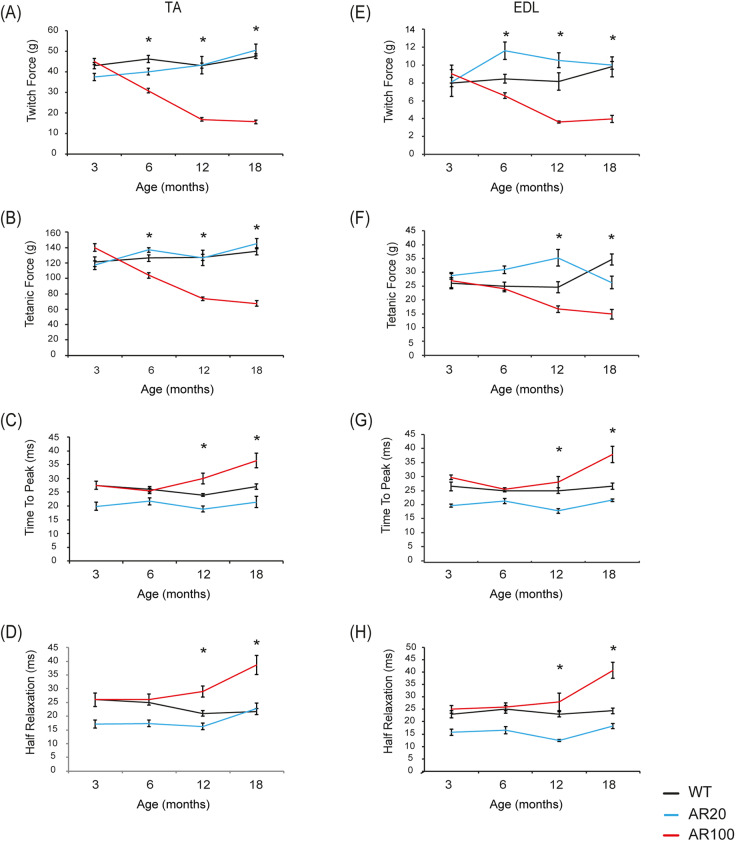Fig. 1.
Muscle force and contractile characteristics of fast-twitch muscles deteriorate over the course of disease in SBMA mice. (A,B) In AR100 mice, there was a clear progressive degeneration in both maximal twitch (A) and maximal tetanic force (B), compared with WT and control AR20 mice. The disease-related decline in twitch and tetanic tension in AR100 mice was significant from 6 months of age. At 12 months, the muscle force deficits plateaued, with little further decline thereafter. (C,D) The contraction/relaxation properties, including TTP (C) and ½RT (D) were prolonged in AR100 mice as disease progressed. This decline happened later than the decline in force and only reached statistical significance at 18 months of age in AR100 mice compared to WT and AR20 mice. (E) In AR100 mice, there was a progressive decline in maximal twitch force throughout the disease course, significant from 6 months of age. (F) The decline in maximal tetanic force was significantly different from WT and AR20 mice from 12 months of age. (G,H) The contraction/relaxation properties, including TTP (G) and ½RT (H) were prolonged in AR100 mice relative to WT and AR20 mice. This change happened later in disease than the muscle force reduction, with the only significant differences evident at the late stage of disease (18 months). The experiments were terminal and therefore the data points represent different mice examined at each time point. Statistical analysis was performed using one-way ANOVA followed by the Student–Newman–Keuls and Tukey's Honestly Significantly Different post hoc tests (n≥5 animals, *P<0.05). Error bars represent s.e.m.

